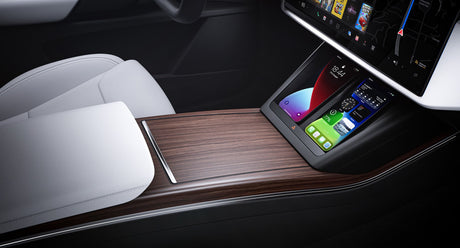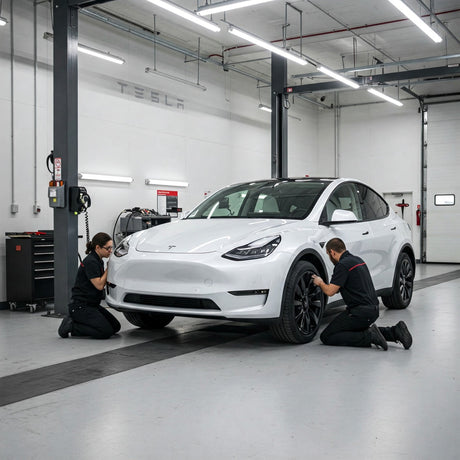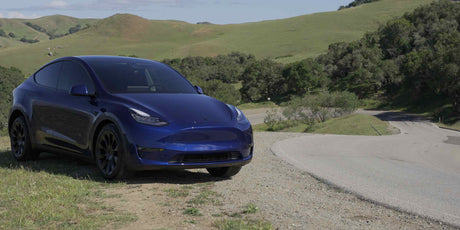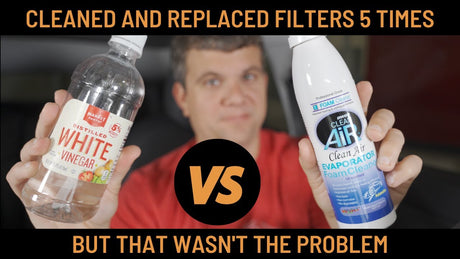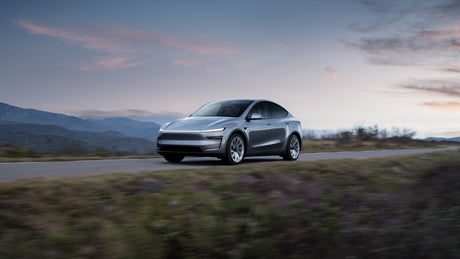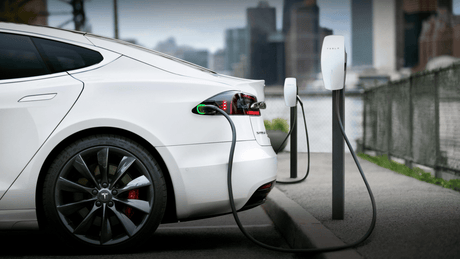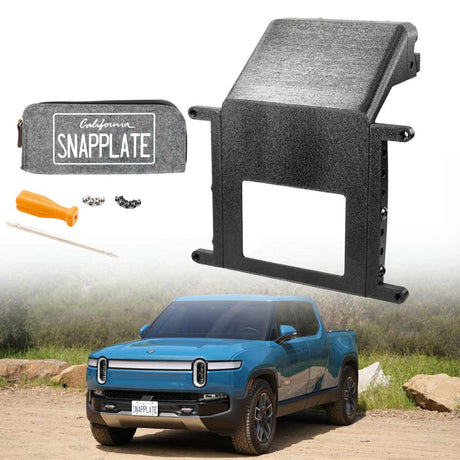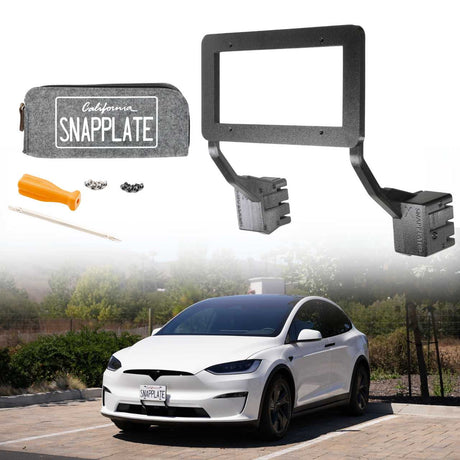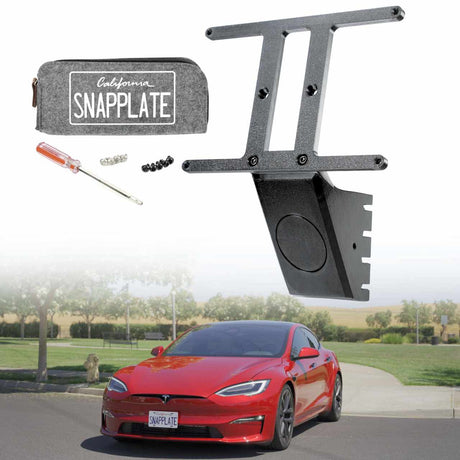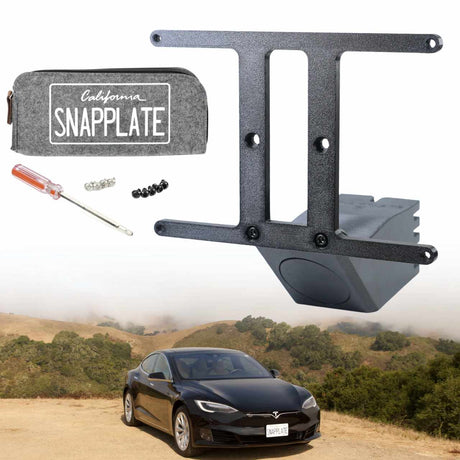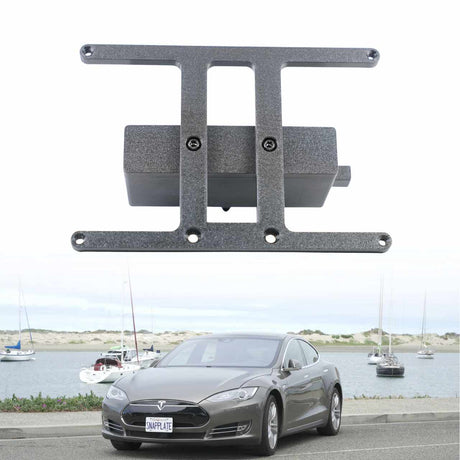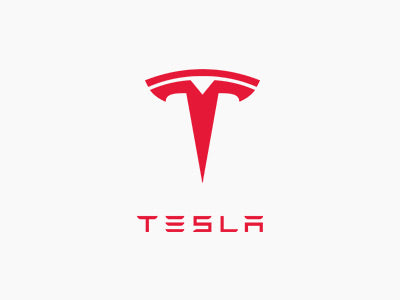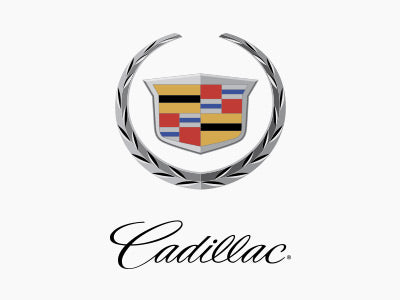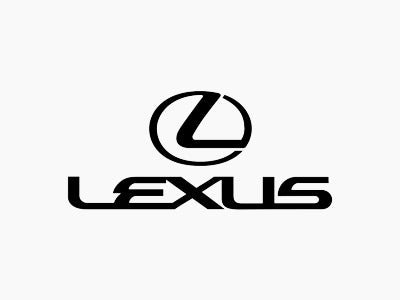That almost seems like a silly question. Metal can be stronger and more durable than plastic and that's always better, right?
Like most things in life, it depends. As the inventors of SnapPlate, the original removable front license plate mounts for Tesla Model Y, 3, S, X, Rivian R1T and R1S, and more, we've put a lot of thought this question, so let's break it down and choose a winner.
What to consider:
- What is it supposed to do?
- How does it look?
- How durable is it?
- What's the cost?
- What's the environmental impact?
What is it supposed to do?
Attach a license plate to the front of a vehicle in a way that's secure, but also fully removable with no screws or adhesives and no damage to the vehicle.
Sounds simple enough, right? But that starts with one important consideration. What does it attach to? In this case, it's a plastic grille and bumper on the car and that matters a lot when it comes to damage to the vehicle.

So what happens in a worst-case scenario like a touch car wash, parking accident, or if you hit an unfortunate animal on the road and your license plate mount is made from a stronger material than your car?
Most likely, a metal bracket will break the plastic vehicle and that can be an expensive repair.
SnapPlates are safety-optimized with breakaway features to sacrifice themselves to keep from damaging vehicles and we have low-cost replacement parts available to repair them if needed.
When it comes to vehicle safety, the choice is clear.
Winner: Plastic
How does it look?
First off, why do we care about the aesthetics of a front license plate bracket? Well, that's kind of the whole point!
Tesla, Rivian, and many other vehicles' owners choose to drive them partly based on their great looks and front license plates take away from that. So when it's installed, you don't want your front license plate mount to further detract from the vehicle's aesthetics.
A common way to manufacture metal parts is to take a sheet of metal, cut out what you want, and discard the rest (we'll come back to this). The metal is then bent into different shapes and screwed together. Plastic can also be manufactured similarly, but 3D printing uses next-generation technology to produce plastic parts that are far more complex.

Metal construction typically has flat panels with hard lines and exposed fasteners that don't fit in with the design of most vehicles.

3D-printed plastic can take many forms including minimal designs that blend into the vehicle rather than standing out.
When it comes to aesthetics, beauty is in the eye of the beholder, but we think it's an easy pick.
Winner: Plastic
How durable is it?
It depends on the exact metals and plastics, but is that even the right question?
Rather than asking which more durable, what about asking if each material is durable enough to perform the job it's given?
When properly coated to prevent rust and corrosion, metal can certainly be very durable, but plastic is inherently resistant to rust and corrosion without relying on coatings that can fail and plastic can be equally capable of performing a task. Much of modern vehicles are made from plastic for that reason!

SnapPlate+ is strength-optimized with a hybrid approach that uses 3D-printed plastic to form the shape of parts with integrated stainless steel fasteners to add strength. It uses the best aspects of both materials!
When it comes to durability, either material can get the job done, and using both together can be even better.
Winner: Both
What is the cost?
Mass production overseas vs Made-in-USA labor is the main cost.
Metal and plastics can both be produced at low or high cost depending on the design needs. Flat designs with poor aesthetics are easy and inexpensive to make in large numbers in large factories with either material. It costs much more to make complicated designs that are aesthetically pleasing, especially in the USA.

SnapPlates are custom designed for every vehicle and are manufactured and assembled in the USA. Small-batch manufacturing costs more, but it can mean better products with superior customer service.
When it comes to cost, either material can vary widely. Cost depends more on where it's made and the design and support that comes with it.
Winner: Tie
What is the environmental impact?
It depends on how it's made and what it's made from.
Both metals and plastics are derived from precious natural resources from the Earth and we want to minimize that impact as much as we can.
Remember earlier when we mentioned taking a sheet of material, cutting out what you need, and discarding the rest? Some manufacturing processes can be very wasteful regardless of if it's metal or plastic. In theory, the waste materials can sometimes be recycled, but that often costs more than just making new material.

SnapPlates are made using 3D printers that melt and form plastics into functional parts with very little waste. The printers deposit just the right amount of plastic in just the right places. No more. No less.
Not only that, SnapPlates use recycled PETG plastic that is derived from the waste material from other products. So we start with plastic that was already potentially waste and then use it as sparingly as we can!
When it comes to environmental impact, 3D printing with recycled plastics is the clear winner.
Winner: Plastic
So, which is the best front license plate mount material?
Plastic takes the win for function, aesthetics, and environmental impact and ties metal for cost and durability. For our vehicles, the choice is clear: SnapPlate!


